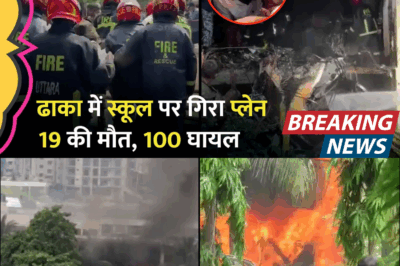Unending Fight for Justice: Activists Demand Answers in Soujanya’s Brutal Murder Case
In a quiet corner of Dakshina Kannada, a persistent fight for justice continues to echo, years after a crime that shook the conscience of Karnataka. Mahesh Shetty Timarody, a well-known activist from the region, has never allowed the world to forget the brutal rape and murder of a 17-year-old girl named Soujanya. For more than a decade, the quest for justice in her case has become more than a solitary struggle—it represents the silenced cries of many other victims whose voices have been snatched away by both violence and systemic neglect.
The case dates back to 2012, when Soujanya, a high school student from Dharmasthala, was found sexually assaulted and murdered. The heinous act quickly became a symbol of the failure of law and order, with Mahesh Shetty Timarody stepping forward to demand accountability. Alongside Soujanya’s mother, Kusuma Devi, and other family members, Mahesh began a movement that would span years and inspire others to raise their voices against similar crimes.
Reflecting on his journey, Mahesh describes a disturbing history that extends far beyond Soujanya’s tragic death. Even as a child, he remembers hearing about incidents in Dharmasthala where minor girls fell prey to rapes and murders, with their bodies discarded in forests, left to be consumed by wild animals. The pattern was chillingly repetitive: violence against young girls, the subsequent erasure of evidence, and silence enforced by both fear and indifference. Mahesh recalls earlier cases—such as the 1986 rape and murder of Padmalatha, a 17-year-old SDM College student, who was tortured and raped for 53 days before her body was recovered from a river. That particular incident had sparked protests at the time, but as Mahesh notes, the social activism eventually faded and the case was quietly forgotten.
The years since have seen more gruesome crimes, each compounding a collective trauma. Mahesh speaks of other victims—a girl from the Dharmasthala High School, who was raped and later murdered, with her body burned to erase evidence. Even those who stood by the victims’ families found themselves at risk; Mahesh recounts the suspicious death of a devoted doctor who supported Soujanya’s family in 2013 and was, according to Mahesh, possibly poisoned to silence him.
Two further murders that rocked the region in 2012—those of Narayana and Yamuna—served to reinforce the feeling of pervasive injustice. These cases were linked to property disputes, but when the victims’ family attempted to register a complaint, the local authorities offered little help, and crucial evidence such as documents was reported missing. Mahesh is adamant that these repeated failures to secure justice are not coincidental but reflect deeper systemic rot, implicating both local officials and powerful vested interests intent on silencing dissent.
Central to the anguish felt by Soujanya’s family is the persistent impression that the police, rather than acting with urgency and transparency, were eager to close the case and erase all traces. Mahesh outlines the grim sequence of official indifference: how the authorities cremated Soujanya’s body in haste, even before a proper post-mortem, in an apparent effort to destroy key forensic evidence. This destruction of evidence was consistent with other cases, where Mahesh found that post-mortem reports would be delayed for days, and the bodies of victims allowed to decompose, further weakening the possibilities of justice.
This atmosphere of impunity was further aggravated when the voices of witnesses themselves began to disappear. Mahesh describes how eight witnesses in Soujanya’s case reportedly lost their lives under suspicious circumstances, and how repeated efforts to register formal complaints against specific individuals were routinely rebuffed by the police. Even when names of suspects were supplied, the authorities would refuse to file FIRs, instead instructing complainants to submit vague or incomplete information.
A new, chilling dimension was added to the case with the testimony of a sanitation worker. This individual, who worked in Dharmasthala from 1995 to 2014, came forward in court with a 164-page affidavit, admitting to participating in the burial of numerous women and children who had been sexually assaulted and murdered. According to his statement, several bodies would float down the Netravati river—a macabre testament to the scale of violence. For years, he claims, he was part of a system that disposed of evidence and covered up heinous crimes. His testimony, submitted before a magistrate, has breathed new life into the Soujanya case and others like it.
The impact was immediate. On the basis of this sanitation worker’s revelations, police registered a fresh FIR in the Dharmasthala police station, prompting other families to come forward, including the mother of another missing girl, Ananya Bhatt. As Mahesh sees it, these developments have caused a sudden and overdue reckoning, though the question remains as to whether this will finally result in real justice.
In response to the growing outrage, the Karnataka government constituted a Special Investigation Team (SIT), led by senior IPS officers including a female officer. For the families and activists who have spent years battling stonewalling and erasure, the SIT offers cautious hope, but Mahesh’s optimism is tempered by years of disappointment. He recalls how, every time there seemed to be progress in the courts, influential individuals would intervene and have legal injunctions issued to block investigations or delete crucial case files. Despite court orders for FIRs to be registered against suspects, Mahesh alleges, the cases would go nowhere, with files mysteriously vanishing and officers shifting blame.
He is painfully aware that politics and power still determine the fate of these cases. When asked directly if the formation of the SIT and the new FIRs will truly bring justice to Soujanya and the numerous unnamed victims, Mahesh responds with a guarded hopefulness but remains wary. He notes that in the past, evidence was often deleted, and important court directives ignored. For every new investigation, there was an equally forceful attempt to stall, silence, or erase the stories of the victims. The release of social media and digital platforms has been a double-edged sword. While mainstream media continues to offer limited coverage—often, in Mahesh’s view, because of pressure or bribery—the spread of stories through Facebook and WhatsApp has allowed narratives to survive and gather support.
This small window of optimism hinges on the extraordinary courage of individuals willing to testify, even at great risk to themselves. Mahesh describes the current team of lawyers and investigators as dedicated and skilled, but he realizes the challenges are immense and the stakes dangerously high. The testimony of whistleblowers, witnesses, and grieving families illuminates a harrowing legacy of violence that cannot be erased by mere legal formalities.
For Soujanya’s family, the pain remains raw. Over thirteen years have passed, but her parents are still denied the closure that justice might offer. Mahesh recounts the tragic decline and recent death of Soujanya’s father, who passed away broken-hearted and exhausted by the struggle for answers. For many of the families who have lost daughters to similar crimes, there is a feeling of isolation—the sense that the hills and rivers of the region have swallowed countless stories, with no one left to ask after the bones buried in the shadows.
Yet, with every protest, with every new voice raised, and every page submitted in court, there is a glimmer of hope. The pressure on the authorities continues to mount, and the courage of activists like Mahesh Shetty Timarody remains undaunted. As he stands outside his home, he asserts that only through free and transparent investigation—without political interference or cover-ups—can the truth finally come to light, and the cycle of violence and silence be broken for good.
News
Ekta Kapoor’s Profound Devotion: Spirituality at the Heart of a Bollywood Mogul
Ekta Kapoor’s Profound Devotion: Spirituality at the Heart of a Bollywood Mogul When one thinks of spirituality and devotion in…
Tanushree Dutta’s Cry for Help: Harassment Allegations and a Plea for Justic
Tanushree Dutta’s Cry for Help: Harassment Allegations and a Plea for Justice In a shocking and emotional revelation, Bollywood actress…
Kerala Woman Dies Under Suspicious Circumstances in UAE: A Tragic Case of Alleged Dowry Harassment and Murde
Kerala Woman Dies Under Suspicious Circumstances in UAE: A Tragic Case of Alleged Dowry Harassment and Murder A heart-wrenching tragedy…
Hansika Motwani’s Controversial Marriage: Betrayal, Backlash, and Rumors of Divorce
Hansika Motwani’s Controversial Marriage: Betrayal, Backlash, and Rumors of Divorce In the glitzy world of Bollywood and South Indian cinema,…
Tragic Air Crash in Dhaka: Bangladesh Air Force Plane Hits School, Killing 19
Tragic Air Crash in Dhaka: Bangladesh Air Force Plane Hits School, Killing 19 In a devastating incident that has shaken…
Hansika Motwani Faces Marital Crisis: Separation Rumors Surface After 3 Years of Marriage
Hansika Motwani Faces Marital Crisis: Separation Rumors Surface After 3 Years of Marriage Bollywood and television actress Hansika Motwani, known…
End of content
No more pages to load












